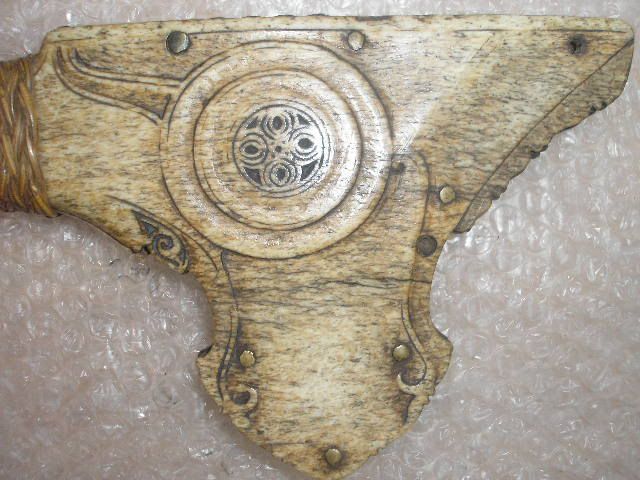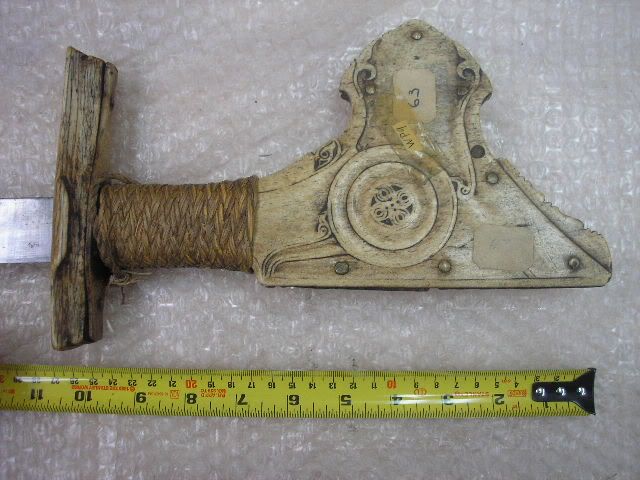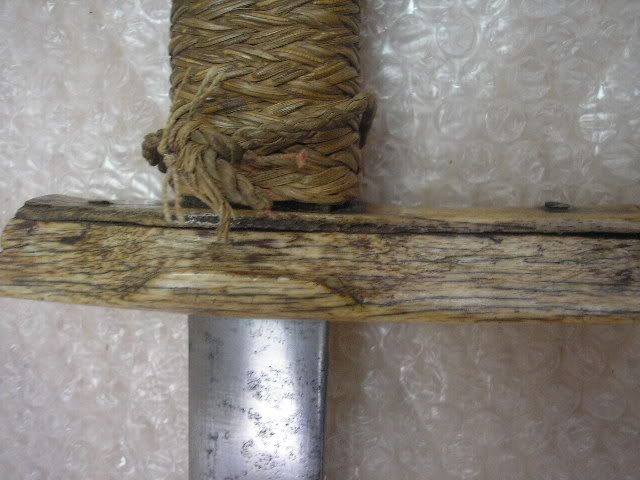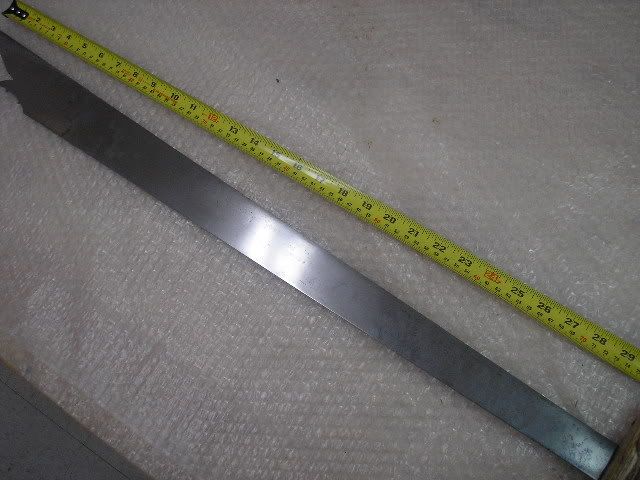Quote:
|
Originally Posted by Jim McDougall
Hi Gav, I'm glad I could help....actually I have never really studied this particular field of weapons, although I have had an example of kampilan.
I must admit that this example has really piqued my interest, which is what led me to the Krieger 1926 article.
There are a number of questions I have, the first of which is why in the world this example has not drawn the attention of the known enthusiasts on these types of weapons here, yet there seems a lot of activity on the concurrent thread with a kampilan with 'odd' handle  |
hi jim,
just a hunch, but the kampilan on the other thread is similar to what cato referred to as a rare type, and i believe not too many of those types have been posted anywhere. the odd handle doesn't necessarily denote timorese, or mindanao, rather it's just another expression of a kampilan hilt.
somewhat similar, but provenanced in mindanao, is this one from cotabato, circa 1899:




Quote:
Actually though, with my new found interest in these, I am curious about these bells mounted on the guard...I understand these are called 'tiger bells'?
I would presume these have some sort of talismanic or auspicious purpose, but can anyone out there be more specific?
|
maurice's link is spot on on this...
Quote:
|
Then there are the curious wavy elements on the guard to which these are attached......if I recall correctly, weren't some kampilans, presumably Moro, with mail hand guards attached to these (but usually on one side)?
|
some staples do have mailed handguard, although it's not too common.
Quote:
Also, if I understand correctly, the term 'datu' seems a bit broadly applied, and these tribal figures from what I understand carried varying degree of position....though I am not clear on whether this was based on a certain heirarchy among them within certain tribes or whether subtribes or location might have determined such status. I have seen references noting that retinues of these datus characterized their degree of status.
I would imagine that that same application might be reflected in thier weapons.
|
datu is indeed a broad term, either acquired by birth right, or bestowed upon. basically, datus are leader of a certain clan. some datus were well off, while some were very rich and/or influential, enabling them to have dozens of followers. bestowed upon meaning it could be granted to a deserving person. a good example is pedro cuevas, a tagalog convict who escaped a spanish prison in zamboanga in the 1800's and crossed the basilan. he eventually converted into islam, killed a datu of that island in a duel and later on became known as datu kalun.
weapon embellishment doesn't necessarily translate to their status. his retinue might carry a kris embellished with silver and ivory, but it doesn't mean he "outranks" another datu in his tribe who has a banati pommeled kris.
Quote:
I would really like to hear the thoughts of those out there who focus on the study of these kampilan's in some degree, regarding these things. Also,
I think the question on the regional attribution is interesting, and wonder if certain features would be indicative of certain regions or tribes.
i.e. the unusual hilt on the other thread is stated to suggest Timor.
All best regards,
Jim
|
as i've mentioned on my earlier post, at this point it's difficult to i'd a certain moro kampilan without hard provenance. i wouldn't be surprise if certain features would be indicative of what tribe they belong to, but even then, due to the proximity of the maranao and its subtribes, and the maguidanao, there's bound to have influences between the two. hope this helps...